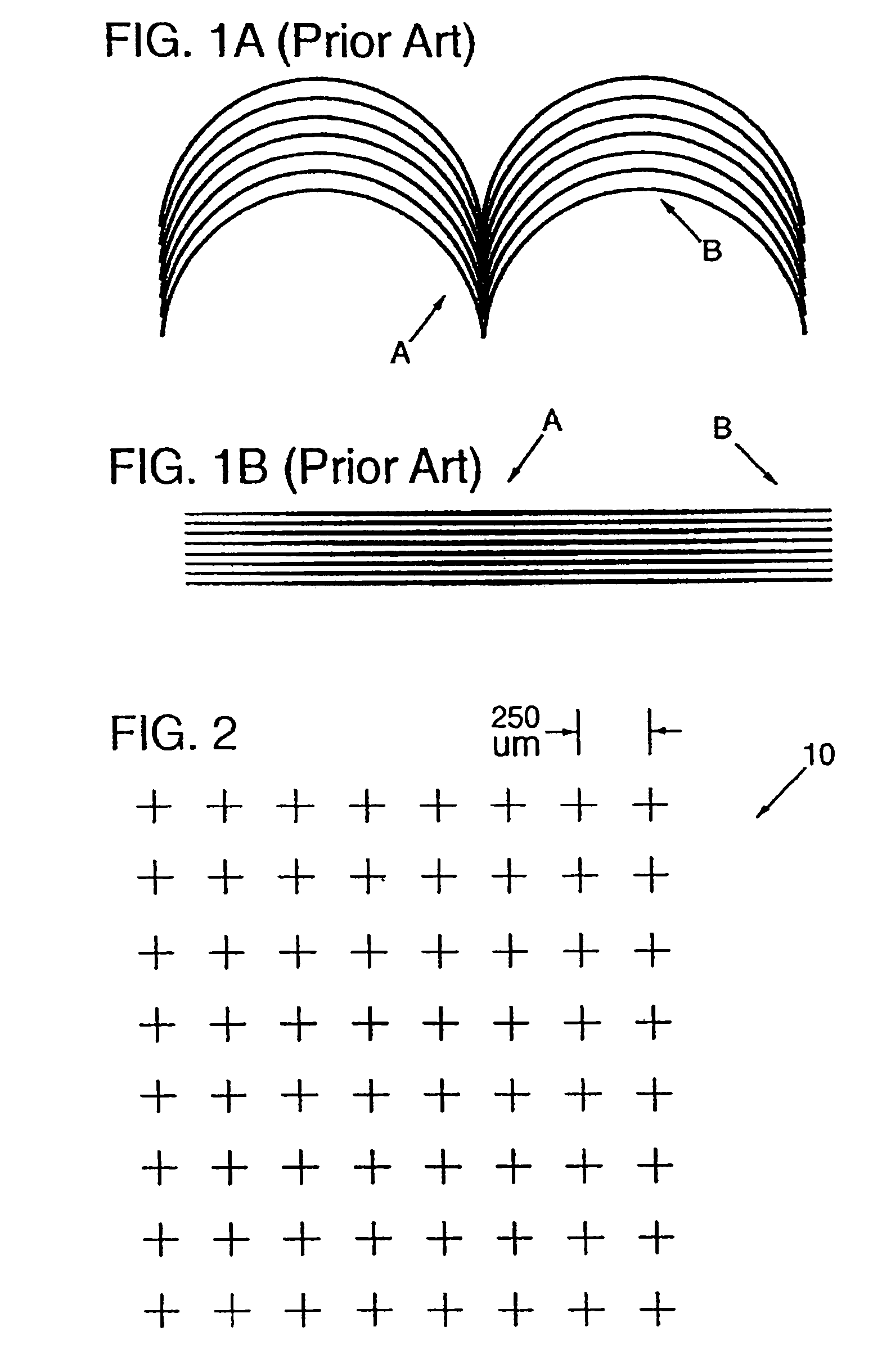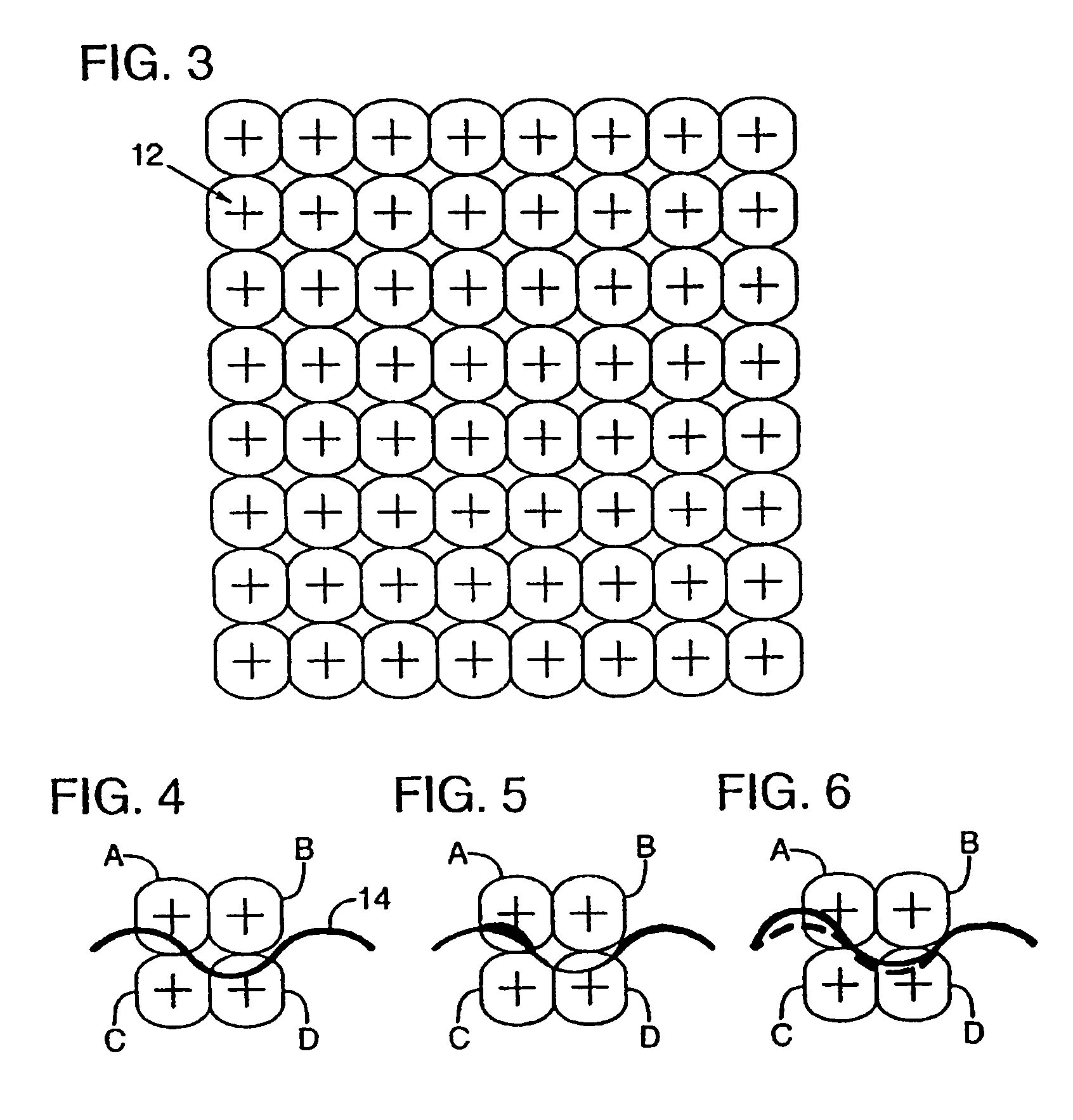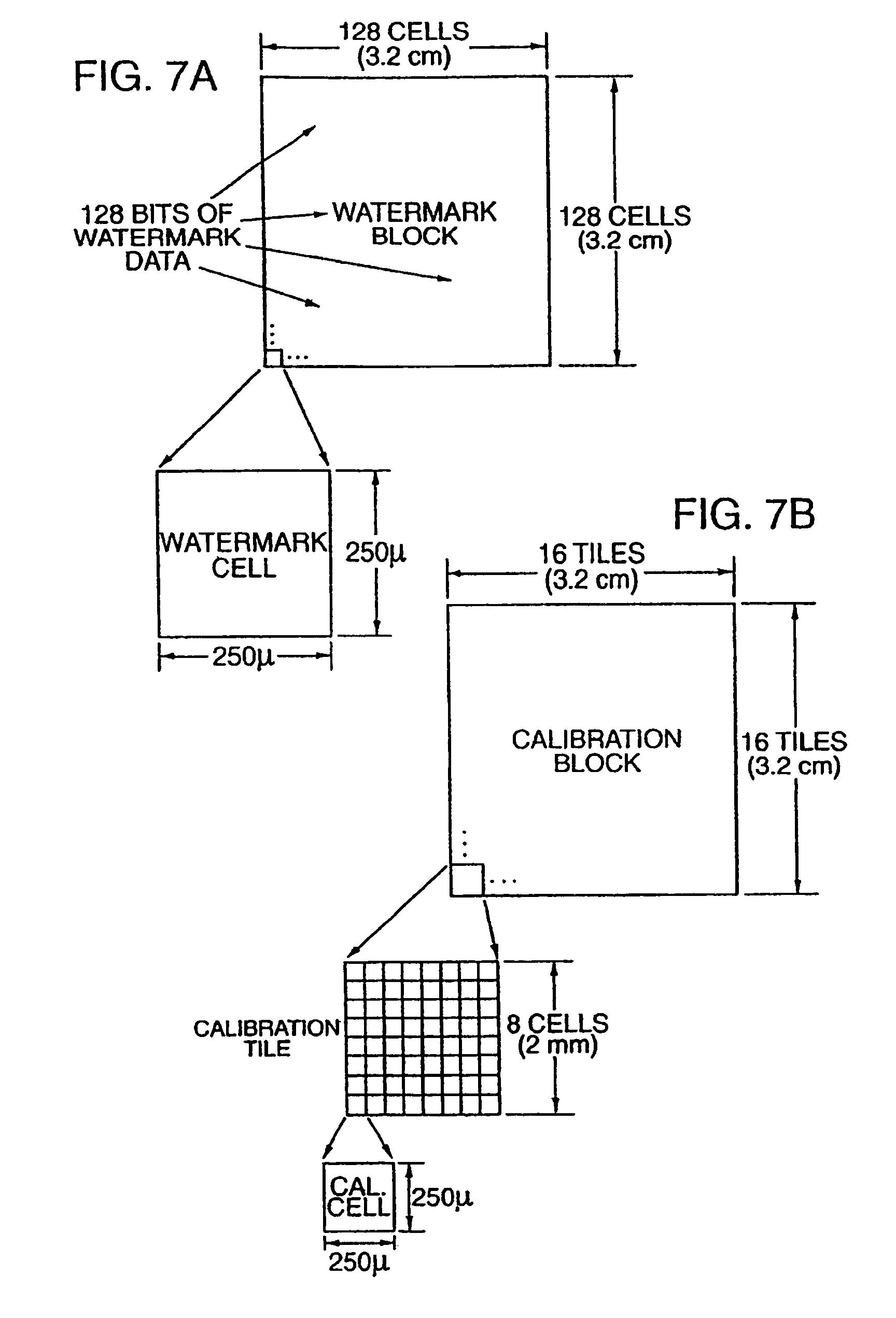Secure documents with hidden signals, and related methods and systems
a technology of hidden signals and documents, applied in secret communication, instruments, printing, etc., can solve problems such as introducing such corruption, and achieve the effect of facilitating detection of encoded information
- Summary
- Abstract
- Description
- Claims
- Application Information
AI Technical Summary
Benefits of technology
Problems solved by technology
Method used
Image
Examples
Embodiment Construction
[0042]By way of introduction, this specification begins with review of techniques for embedding watermark data in line art, as disclosed in my application Ser. No. 09 / 074,034.
[0043]Referring to FIG. 2, the earlier-described technique employs a grid 10 of imaginary reference points arrayed over a line art image. The spacing between points is 250 microns in the illustrated arrangement, but greater or lesser spacings can of course be used.
[0044]Associated with each grid point is a surrounding region 12, shown in FIG. 3. As described below, the luminosity (or reflectance) of each of these regions 12 is slightly changed to effect subliminal encoding of binary data.
[0045]Region 12 can take various shapes; the illustrated rounded-rectangular shape is representative only. (The illustrated shape has the advantage of encompassing a fairly large area while introducing fewer visual artifacts than, e.g., square regions.) In other embodiments, squares, rectangles, circles, ellipses, etc., can alt...
PUM
 Login to View More
Login to View More Abstract
Description
Claims
Application Information
 Login to View More
Login to View More - R&D
- Intellectual Property
- Life Sciences
- Materials
- Tech Scout
- Unparalleled Data Quality
- Higher Quality Content
- 60% Fewer Hallucinations
Browse by: Latest US Patents, China's latest patents, Technical Efficacy Thesaurus, Application Domain, Technology Topic, Popular Technical Reports.
© 2025 PatSnap. All rights reserved.Legal|Privacy policy|Modern Slavery Act Transparency Statement|Sitemap|About US| Contact US: help@patsnap.com



